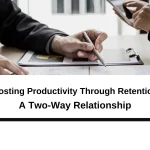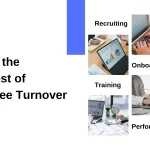
Work has changed a lot in the past few years. Many employees no longer want a strict “9 to 5” job where they must sit in the office every day. They want something different: workplace flexibility. This means having some freedom to decide when, where, and how they work.
For companies, this is not just a trend. It is a way to keep employees happy, engaged, and loyal. When people feel trusted and supported, they are less likely to leave. That’s why flexibility in the workplace has become one of the best ways to reduce turnover and improve satisfaction.
Workplace flexibility is about giving employees choices. Instead of forcing everyone to follow the same schedule, companies allow different options. This is called flexible workplace arrangements.
Some common examples are:
A flexible workplace focuses on results, not just hours. Employees are measured by what they deliver, not by how long they sit at their desks.
Flexibility makes their lives easier and healthier; that’s why employees want it. These are the primary causes:
Happier employees are also more loyal. They are far more likely to speak positively about the company, which improves the company’s reputation.
Employee turnover is very costly. Every time someone leaves, the company spends money on hiring, training, and lost productivity. Even worse, the rest of the team feels the pressure of extra work.
Workplace flexibility directly reduces this problem. When employees feel they can balance work and life, they are less likely to quit. Flexible work arrangements have been shown to boost engagement and retention.
Businesses with flexible policies retain talented employees over time instead of losing them to rivals.
In The Goldilocks Team, the author explains that employees stay when four human needs are met: safety, purpose, growth, and connection. Workplace flexibility helps meet each of these needs.
When these needs are satisfied, workers grow rather than just remain.
Some managers are concerned that flexibility could affect teamwork or productivity. Others worry that workers will take advantage of it. However, with the correct strategy, these fears can be addressed.
Clear communication, trust, and defined goals are crucial. Flexibility benefits both parties when managers keep lines of communication open and focus on outcomes.
Workplace flexibility is not going away. Younger generations expect it, and technology makes it easy to manage. Companies that offer flexibility do attract more talented workers.
Those who ignore it may find themselves losing their best people.
Flexibility in the workplace is more than a nice benefit. It is a strategy for building a loyal, motivated, and satisfied workforce. A flexible workplace reduces stress, builds trust, and keeps employees engaged.
Most importantly, flexible workplace arrangements reduce turnover. Instead of constantly hiring and training new people, companies keep their best talent for the long run.
In the end, workplace flexibility is about respect and trust. When employees feel supported, they don’t just stay, they grow and help the company succeed.
Workplace flexibility means giving employees some freedom in how, when, or where they work. It can be working from home, starting work earlier or later, or even sharing a job with someone else.
Flexibility in the workplace is important because it helps people balance work with personal life. It reduces stress, makes employees feel trusted, and improves job satisfaction.
A flexible workplace keeps employees happy and supported. When people can manage work and life together, they are less likely to leave their job for another company.
No. In fact, many employees work better when they have flexibility. They save time, feel less stressed, and often produce better results.
The future of workplace flexibility is growing. More companies are offering flexible workplace arrangements because it helps attract and keep the best talent.

Boosting Productivity Through Retention: A Two-Way Relationship Minal Joshi Jaeckli October 31, 2025 When leaders talk about productivity, the conversation almost always drifts toward tools,.

What Is the Real Cost of Employee Turnover? (And How to Reduce It) Minal Joshi Jaeckli October 28, 2025 Every leader knows turnover is costly,.

How Workplace Flexibility Boosts Employee Satisfaction and Reduces Turnover Minal Joshi Jaeckli October 25, 2025 Work has changed a lot in the past few years..